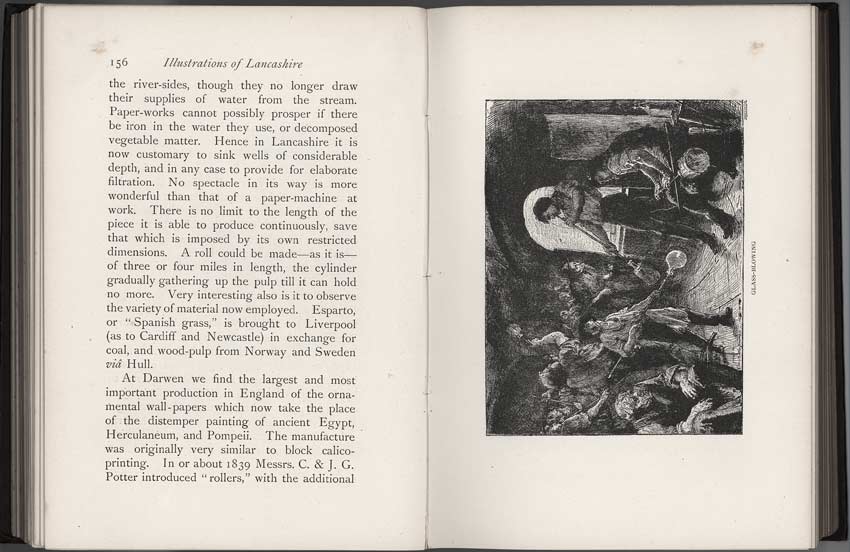
Scan and page transcript from:
LANCASHIRE - Brief Historical and Descriptive Notes
by Leo H. Grindon
Pub. 1892
pages 156-157 |
156 Illustrations of Lancashire the river-sides, though they no longer draw their supplies of water fromi the stream. Paper-works cannot possibly prosper if there be iron in the water they use, or decomposed vegetable matter. Hence in Lancashire it is now customary to sink wells of considerable depth, and in any case to provide for elaborate filtration. No spectacle in its way is more wonderful than that of a paper-machine at work. There is no limit to the length of the piece it is able to produce continuously, save that which is imposed by its own restricted dimensions. A roll could be made - as it is - of three or four miles in length, the cylinder gradually gathering up the pulp till it can hold no more. Very interesting also is it to observe the variety of material now employed. Esparto, or "Spanish grass," is brought to Liverpool (as to Cardiff and Newcastle) in exchange for coal,,and wood-pulp from Norway and Sweden via Hull. |
